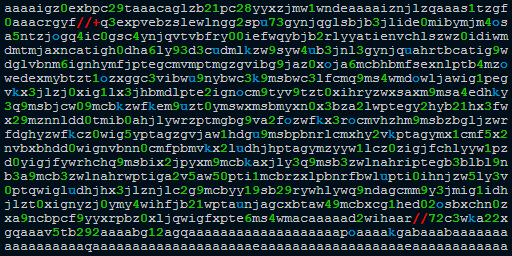

Compared to encodeURI(), this function encodes more characters, including those that are part of the URI syntax. The encoding of + and and & is of particular importance here, as these are special chars in query strings.
JS DECODE URI PLUS
nonprintable) characters, whereas encodeURIComponent additionally encodes the colon and slash and plus characters, and is meant to be used in query strings. Browsers automatically encode the URL i.e. The encodeURIComponent() function encodes a URI by replacing each instance of certain characters by one, two, three, or four escape sequences representing the UTF-8 encoding of the character (will only be four escape sequences for characters composed of two surrogate characters). Looks like encodeURI produces a 'safe' URI by encoding spaces and some other (e.g. Many times construct a URL string with query params and in order to understand it, the response server needs to decode this URL.
JS DECODE URI CODE
Onclick of the button " Encode URI Component " in the HTML code fires the function myEncoding() in the block at the same type encodeURIComponent() function encodes the string component and returns as output. Encoding and Decoding URI and URI components is a usual task in web development while making a GET request to API with query params. Now I am taking the value of the callBackUrl in my js method, then decoding it. decodeURIComponent is the best practice tool for this job.

In the above code snippet we have given Id as " myId "to the second element in the HTML code. There is a function myEncoding() in the block which is connected to the onclick of the HTML button and there is a string with component " $%^&*()" to the variable u, we need to encode the component of u variable, for that we are using encodeURIComponent() function in Variable r. I am using Javascript method decodeURIComponent to decode an encoded URL. Use decodeURIComponent: var decoded decodeURIComponent (foo) decodeURI has some issues as you are seeing. Click the below button to Encode URI component.ĭocument.getElementById(" myId").innerHTML = r Here is the list of those characters: to knowĭecodeURI and decodeURIComponent are methods to decode a string that is encoded by encodeURI and encodeURIComponent respectively.ĮncodeURIComponent does not encode -_.!~*'().By using encodeURIComponent() we can encode a uniform resource identifier (URI) component. The decodeURIComponent() function converts a URL encoded string back to its normal form. Javascript URL decoding using the decodeURIComponent() function. log (c, encodeURI (c ), encodeURIComponent (c ) ) ) It uses UTF-8 encoding scheme to decode URI components. filter ( ( c ) => encodeURI (c ) != encodeURIComponent (c ) ) Īrr. Decodes strings encoded by encodeURI and encodeURIComponent, without throwing errors on invalid. The following snippet prints these characters: const arr = Array ( 256 ) There are 11 characters which are not encoded by encodeURI, but encoded by encodeURIComponent. Whereas encodeURIComponent is used for encoding a URI component such as a query string.
JS DECODE URI FULL
DifferencesĮncodeURI is used to encode a full URL.

In UTF-8, the number of leading 1 bits in the first byte, which may be 0 (for 1-byte ASCII characters), 2, 3, or 4, indicates the number of bytes in the character. It takes a single parameter, which is the URI component to decode, and returns the decoded string. The decodeURI () function decodes the URI by treating each escape sequence in the form XX as one UTF-8 code unit (one byte). decodeURIComponent() is a built-in JavaScript function used to decode a Uniform Resource Identifier (URI) component previously created by the encodeURIComponent() function. They will be replaced by a sequence of different characters that represent its UTF-8 encoding.ĮncodeURI and encodeURIComponent are used for that purpose. decodeURI () is a function property of the global object. Because a URL can consist of standard ASCII characters only, other special characters have to be encoded.


 0 kommentar(er)
0 kommentar(er)
